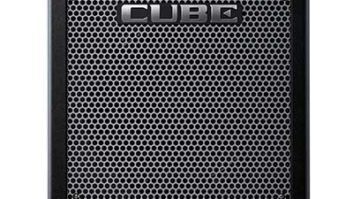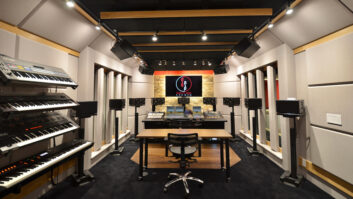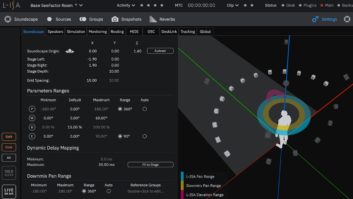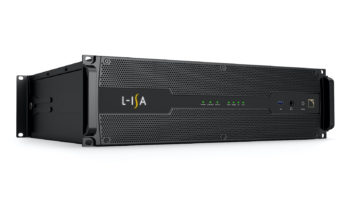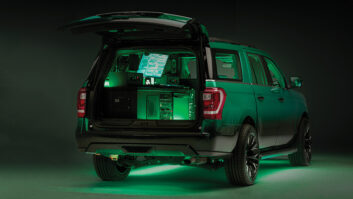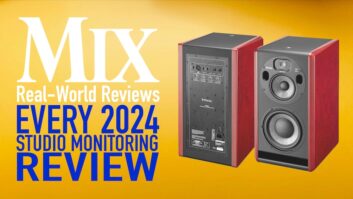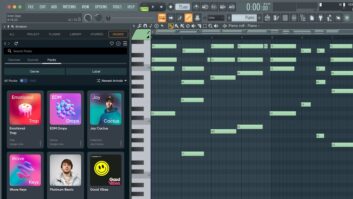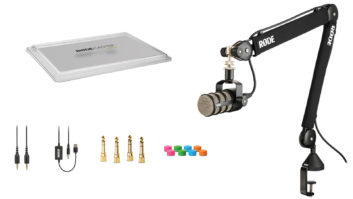You’re stranded on a desert island, but were able to salvage only a handful of your favorite pieces of recording equipment. What did you save?
“My go-to compression piece is my [Empirical Labs] Distressor; it’s one of those ‘desert island’ boxes,” says Rob Ruccia, chief engineer at Uptown Recording in Chicago. “With all of our gear, it’s just about having different flavors and colors. With that Distressor, it’s so many different flavors and colors in one box.”
Ruccia, who uses a pair of stereo-linked EL8X units at Uptown, elaborates, “You can get it to sound like an LA-2A or an 1176. It’s got a button that says ‘Nuke,’ which is awesome. Who doesn’t want to nuke something? That does the ‘all buttons in’ thing that the 1176 does.”
It’s a true go-to box, he says: “It’s part of my vocal chain, I use it for drums, for overheads, for guitars. I even use it on the mix as a hardware insert in Pro Tools.”
He continues, “It’s got a little light: when it starts to go yellow, it sounds good; when it gets closer to red, it sounds better. It has different filters and high-pass; you can change the detection circuit on it; you can add distortion. There are things that it does that you shouldn’t be able to do with hardware.”
There’s just one problem: “Nobody has come out with a Distressor plug-in yet. It’s hardware only,” says Ruccia. He may soon be in luck, however; in December, Empirical Labs began teasing social media followers about a plug-in that company founder Dave Derr calls “The Real Thing.” It’s expected to debut at Winter NAMM 2016.
Ruccia adds, “If there was another piece that I had to have, it would be my Avalon 737. Before the Distressor in a vocal chain, it’s beautiful. I love the 737 for bass, coming out of an Avalon DI box. Between Avalon and Empirical Labs, I can do anything.”
Paul Horabin, owner of ReadyMix Music in N. Hollywood, CA, also values his equipment for the color it imparts to his projects, which typically involve “live musicians, playing instruments,” he says. “The music we’ve been listening to sounds that way because of the color of the gear it’s put through.”
If stranded, Horabin would rescue his favorite vocal chain. “For me, it’s the API 3124+ and Dave Pearlman’s microphone, the TM 2. Dave let me try a TM 2 and it’s been my go-to since.”
He has other mic preamps: “I have the Millennia, a UA 2-610 and an Avalon. But the API, I just love it too much. The pairing of the Pearlman and the API works wonders for a vocal. The Pearlman through the API is instant ‘vibe’ on a vocal and gives it a character that makes it sound authentic. It sounds musical.”
Horabin prefers to record without compression. “The TM 2 has a pretty hot output, so it depends on the singer. I’ve also got an A-Designs ATTY in front of the API, so that I can turn the input of the API down without putting the pad on, because that changes the tone.
“I’m not averse to having the API pre go into the red and distort on the way in; that’s not for everything,” he laughs, “but it does give a certain immediacy.”
At his Veneto West complex in Venice, CA, studio owner Ronan Chris Murphy says, “I’m a big fan of Quad Eight-style mic pres. I would say 90-something percent of the vocals I record go through either an ADesigns Pacifica Ventura or original Quad Eight MM71 modules. Those A-Designs boxes are modeled after Quad Eight as a starting point. Especially in my own studio, I can’t think of the last vocal I recorded where I used something other than that. For me, they tend to be the perfect balance of detailed and colored.”
As part of the vocal chain, he continues, “I also tend to hit an LA-2A; the one I have is from one of the Drip Electronics kits.” That then goes through a one-of-a-kind prototype Apogee AD16X converter, he adds.
As for microphones, Murphy, well-known for his Recording Boot Camp and Recording Show product reviews, notes that he has tried many makes and models. “I would say the most common winners tend to be our Shure SM7B or Pearlman TM 1,” he reports.
“The one variant is that in the last couple of years, I’ve been getting really excited about recording things like vocals out in remote locations for different emotional and sonic ambience. We’ve been doing a ton of work just bringing our MacBook Pro and Apogee Duet 2 [interface]. We alternate between the SM7B or a Shure KSM32. When we use the SM7B, we usually use a Triton Audio FetHead to get a little extra gain and tweak the impendence. That brings a little more detail and clarity out of the mic.”
For the remote sessions, he continues, “One of my go-to plug-ins is iZotope RX. It allows me do these remote recording places that are great for emotional reasons but maybe not sonic reasons. It lets me go in and fix some of the sonic sins of the environment.”
“It’s taken a long time to come to that place of trust where I use gear because it fits my style and helps me realize what I have in mind, as opposed to using what others use,” says Scott Frankfurt, owner of Scott Frankfurt Studio in Woodland Hills, CA, and VP of design for virtual instrument software developer Spectrasonics.
“A perfect example are my GP2 Inc. BL99 mic preamps. They are rare—we have eight channels—and I fell in love with two things: the tone and the interface. The sound is hefty but clear; it’s based on 990 op-amps and well-matched Jensen transformers.”
On the interface, he continues, “There is a ‘glow light’ level indicator per channel—no VU or segments. You can get a sense of how hot it is by how bright it is, but you have to use your ears.
“Another great interface touch is that while the gain pot is continuous, the control is stepped, so I can always repeat a setting, but can also go ‘in-between’ the 1.5 dB steps. I wish I had more. It’s definitely one of the secret sauces of Scott Frankfurt Studio.”
He also has a favorite plug-in: “Using a Harmonizer on the under-snare mic is not a new technique, but lately I am addicted to the sound of the UAD Eventide Harmonizer for this application. Since you typically have decent bleed on this mic, you can get an amazing sense of width on the kit by stereo pitch-shifting it without resorting to aggressive panning or wideners later, which can compromise the overall sound. We are big fans of the UAD platform—those folks are listening—and the 140 and 250 [reverb] plates never get ignored.”
Frankfurt also has some love for a microphone: “Our AEA R88 MkII stereo ribbon mic. We shot out mics for strings, and this mic won. But we’ve found amazing applications for this mic all around the studio.”
Finally, he says, “Of course, I’m biased since I had a significant involvement in the development of Spectrasonics Omnisphere 1 and 2, but using Audio Import and applying Inner Space convolutions, many of which I created at our studio, will break open a palette of never-before-heard sounds.”
